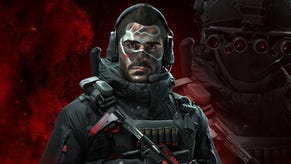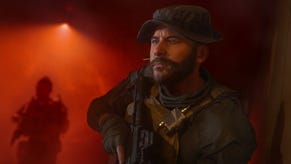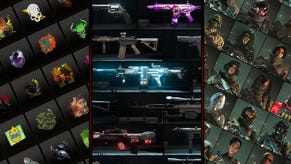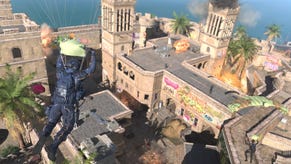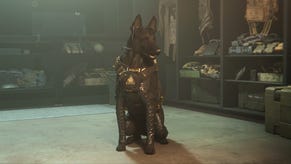The Modern Warfare 2 campaign offers much more than a photorealistic Amsterdam
Infinity Ward's IW9 engine flexes on PS5 and Xbox Series consoles.
Every few years the Call of Duty series hits a new technical milestone - a definable moment where developers like Infinity Ward make a clear break from what came before. The 2019 Modern Warfare reboot was exactly that, its IW8 engine delivering an enormous boost in geometry, a new lighting model, updated physics, materials and a streaming system for large-scale maps. It was a breakthrough for the series, iterated on in last year's Vanguard and improved once again for the new Modern Warfare 2. Now dubbed IW9, Infinity Ward's custom engine offers up a wealth of upgrades, including stunning character rendering, improved water simulation and AI upgrades. However, it's the game's beautiful recreation of Amsterdam that has captured the headlines - and rightly so.
Modern Warfare 2's story gives the IW9 engine a superb workout. Each mission really is a vehicle - a self-contained showcase - putting each of its new visual tricks front and centre in ways the multiplayer modes cannot. Every set-piece escalates too, level to level: from upside-down shoot-outs to hopping between exploding cars, from dodging container units on a rocking tanker to swimming the Amsterdam canals at night - there's huge variety.
A huge highlight here is the Recon By Fire mission, where we see the IW9 tech pushing a vast, sprawling, misty landscape of green. It plays perfectly to its strengths. All linearity is thrown out the window in favour of a more open-ended design. You get to choose dialogue, you choose what points to strike first, and you choose how to do it: by stealth or all guns blazing. It's the classic All Ghillied Up mission from Call of Duty 4 taken to a new generation, a brilliant reinvention with multiple ways to attack it. And while there are certain missions that outstay their welcome - particularly the top-down gunning in Close Air - more often than not, its set-pieces at least hit the mark.
 Call of Duty Modern Warfare 2: DF Tech Review - Amsterdam vs Reality Comparison + PS5 vs XSX Tested!
Call of Duty Modern Warfare 2: DF Tech Review - Amsterdam vs Reality Comparison + PS5 vs XSX Tested!
The most memorable mission - visually speaking - is the now iconic Amsterdam level. It's a quiet story beat, a moment of calm in-between the game's more bombastic action. Strolling down the red-light district, every small detail here is almost directly lifted from the real world: the stylings of the cafe signs, the bikes flanking the canal, the road markings - even the proportions of its brick roads, the arcing bridge, and the spire of the Old Church are precisely measured. There are exceptions but the team at Infinity Ward uses photogrammetry to take most real-life materials - each brick, each restaurant sign - and translates their properties to the game engine. It informs the lighting engine, all playing a huge role in giving true-to-life results.
Perhaps more remarkable is the sheer accuracy of this Amstderm level's scale. MW2's rendering of Amsterdam's streets comes across as such a direct, literal translation of the actual thing, it's even possible to compare the two directly - in 1:1 fashion - and that's a key focus in the video embedded above (and many thanks to Melhi Korkmaz for providing the real-life footage). Yes, there are going to be obvious differences: NPCs are still a world away from effectively capturing human behaviour, while screen-space reflections are too artefact-prone to capture the way light actually reflects on rain-soaked brickwork. Infinity Ward are still in cross-gen territory here - and not even the PC version benefits from the ray-traced reflections that would add so much more to the realism level.
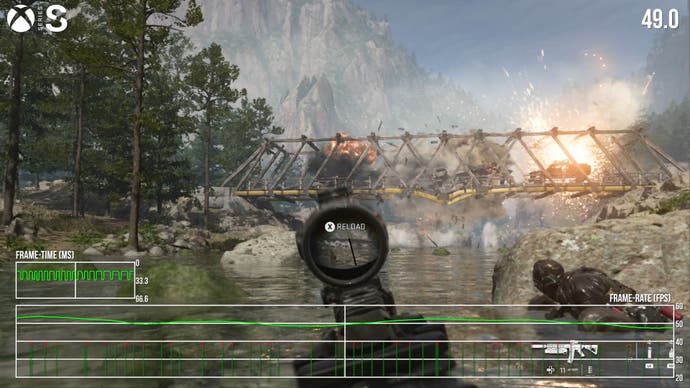
Beyond Amsterdam, the early Wetwork mission showcases the new water tech of IW9, letting you dive into a simulated water body, using it as a form of stealth as you take down guards. The ripples and caustics as the water hits the bay are well realised - and later missions even have you shooting at guards while floating downstream in a wild set-piece. But again, SSR is very much in place on console, with all the expected break-up on the reflections over the top.
Comparisons between the big three consoles - PS5, Series X and S - are something of a footnote at this point. Modern Warfare 2's engine setup keeps to a dynamic 4K on PS5 and Series X - with infrequent drops in pixel count under the top-end target. Visually, there are no differences between the two premium machines otherwise, making it a direct match. There's a dynamic 1440p on Series S, with the pixel count dropping to 2250x1440 at its lowest, as per usual scaling on the horizontal axis only. Pitting the junior Xbox against the Series X, there are only minor tweaks in settings, with reductions in grass density and shadow quality. From a visual standpoint, all three are very robust though, but the more powerful machines deliver more stability and improved image quality.
Performance-wise, PS5 and Series X versions both hand in a rock-solid 60fps in the standard 60Hz mode, with only one part of one specific mission (a bridge collapse) causing any issues on a one-time playthrough on Series X, sailing through without issue on a second run on the Microsoft hardware and having no problems at all on PS5. Series S generally runs well too, though the collapsing bridge sees a drop to 50fps, accompanied by screen-tearing at the top of the screen. Generally, Series S is less stable overall, displaying near-constant tearing at the beginning of the Wetwork mission, for example. Performance is still strong overall on the entry-level Xbox, and it's a perfectly fine way to play through the campaign. The only other difference of note in performance terms is that PS5 is fully v-synced, meaning no tearing is present at all.
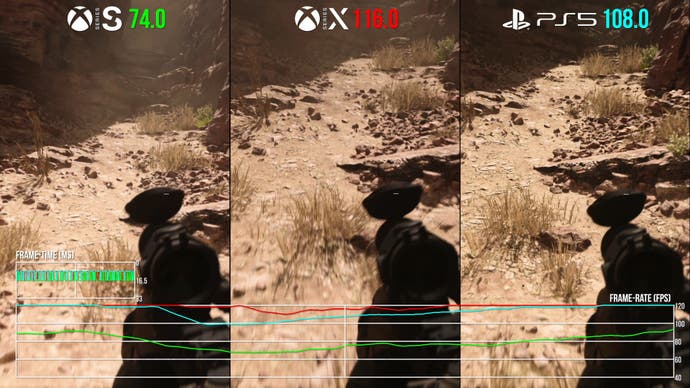
The optional 120Hz mode allows for performance running up to 120fps, as you might expect, but it's perhaps more suited to users of a VRR display. A clean 120fps read-out is rare on all consoles, limited to simpler internal areas, while bigger, more challenging levels tend to run as low as 80fps on the PS5 and Xbox Series X. Microsoft's powerful console runs with a marginal lead over PS5 in most scenes - by around 5fps overall - though there are points where they swap the lead position. Series S offers limited gains in this mode, typically running 30-40fps slower than its more powerful counterpart.
Overall, the advances in tech for Modern Warfare 2 are perhaps less revolutionary than the first 2019 reboot. 'Iterative' is a fair description, much like the advances in Call of Duty Vanguard, though there are some clear highlights here. The Amsterdam area forces a welcome change of pace, for one - it's a slower moment that allows the player to soak in Infinity Ward's technical prowess.
It's all the more impressive bearing in mind that at the fundamental level, Modern Warfare 2 is built to run well on the base PlayStation 4, so I'm looking forward to seeing how the last-gen versions shake out - early impressions suggest noticeable cutbacks in detail and a significantly less stable adherence to the 60fps target. It seems to work though, which makes me wonder: if Infinity Ward can deliver such a good-looking cross-gen game, a new COD exclusively targeting modern hardware is an absolutely mouthwatering proposition - and I hope we get to see that in the next major series entry.



